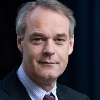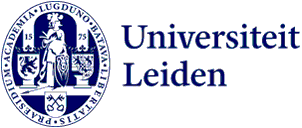452 search results for “stem cell transplant” in the Staff website
-
 Willem Fibbe
Willem FibbeFaculteit Geneeskunde
w.e.fibbe@lumc.nl | +31 71 526 2271
-
 Micha Drukker
Micha DrukkerScience
m.drukker@lacdr.leidenuniv.nl | +31 71 527 6271
-
LUMC will administer first Dutch stem cell gene therapy to patients
Researchers and clinicians at Leiden University Medical Centre (LUMC) are about to begin a milestone clinical study. It will be the first time a stem cell gene therapy developed in the Netherlands is used in a clinic. The therapy will be used to treat children with SCID, a rare disorder where children…
-
300 million euros for new international stem cell consortium
The Leiden University Medical Center (LUMC), the Danstem Institute from the University of Copenhagen and the Murdoch Children’s Research Institute in Melbourne have received 300m euros from the Novo Nordisk foundation. The aim of this new international consortium is to bring stem-cell based therapies…
-
First patient in the Netherlands successfully treated with stem cell gene therapy
Researchers from the Leiden University Medical Center (LUMC) have successfully used stem cell gene therapy to treat a baby with the severe congenital immune disorder SCID. An important milestone: it is the first time stem cell gene therapy of Dutch origin has been administered to a patient, and also…
-
Curing diseases with lab-grown organs
Organs and tissues grown in the lab may in the future be able to cure people with organ failures. Micha Drukker, professor of Stem Cells, Developmental Biology and Technology for Innovative Drug Research, is convinced that the use of stem cells will make this possible. He will deliver his inaugural…
-
 Ewa Snaar-Jagalska
Ewa Snaar-JagalskaScience
b.e.snaar-jagalska@biology.leidenuniv.nl | +31 71 527 2727
-
 Christine Mummery
Christine MummeryFaculteit Geneeskunde
c.l.mummery@lumc.nl | +31 71 526 9300
-
 Joey Zuijdervelt
Joey ZuijderveltScience
j.l.zuijdervelt@lacdr.leidenuniv.nl | +31 71 527 6227
-
 Lieke Wirken
Lieke WirkenFaculteit der Sociale Wetenschappen
g.a.a.wirken@fsw.leidenuniv.nl | +31 71 527 3711
-
The career choices of cells
How does an embryonic stem cell decide if it becomes a heart cell or a kidney cell? That’s the question computational biologist Maria Mircea studied for her PhD research. She looked at the inside of individual cells to analyse how they change. This is what she discovered.
-
 Dennis Claessen
Dennis ClaessenScience
d.claessen@biology.leidenuniv.nl | +31 71 527 5052
-
 Serkan Aslan
Serkan AslanScience
s.aslan@lacdr.leidenuniv.nl | 071 5275919
-
 Cornelis van Kooten
Cornelis van KootenFaculteit Geneeskunde
c.van_kooten@lumc.nl | +31 71 526 2148
-
 Bas ter Braak
Bas ter BraakScience
s.j.ter.braak@lacdr.leidenuniv.nl | +31 71 527 2727
-
A tail with a twist: how the tokay gecko grows a completely new body part
When the tokay gecko loses its tail, a new one grows from resident stem cells at the stump. Each tissue type - muscle, bone, blood vessels and skin - develops from specific stem cells. This discovery by Luthfi Nurhidayat holds potential implications for advancing regenerative medicine in humans. Nurhidayat…
-
 Peter Bouwman
Peter BouwmanScience
r.j.p.bouwman@lacdr.leidenuniv.nl | 071 5276105
-
 Frank Schaftenaar
Frank SchaftenaarScience
f.h.schaftenaar@lacdr.leidenuniv.nl | +31 71 527 5134
-
 Douwe Atsma
Douwe AtsmaFaculteit Geneeskunde
d.e.atsma@lumc.nl | +31 70 526 2020
-
 Noortje Dannenberg
Noortje DannenbergScience
n.dannenberg@biology.leidenuniv.nl | +31 71 527 5075
-
 Erik Danen
Erik DanenScience
e.danen@lacdr.leidenuniv.nl | +31 71 527 4486
-
 Véronique Ongenae
Véronique OngenaeScience
v.m.a.ongenae@biology.leidenuniv.nl | 071 5272727
-
Hoe meer tijd, hoe beter de nier
Donororganen zijn er nooit genoeg. De organen die wel beschikbaar zijn, moeten vliegensvlug getransplanteerd worden. De geneeskunde zet daarom volop in op het langer goedhouden van organen. Marlon de Haan (24) onderzoekt hoe je nieren buiten het lichaam in leven kunt houden.
-
 Joost Beltman
Joost BeltmanScience
j.b.beltman@lacdr.leidenuniv.nl | +31 71 527 4323
-
 Arthur Ram
Arthur RamScience
a.f.j.ram@biology.leidenuniv.nl | +31 71 527 4914
-
Gijs Zebregts: ‘I want to give hope to fellow sufferers of leukaemia’
Gijs Zebregts had just graduated from International Studies when he was stricken with acute leukaemia. A stem cell donor brought relief. Now he is going to cycle from Florence to Rotterdam to raise money and awareness for the donor bank.
-
Young, sleeping memory cells are crucial in fighting a reinfection
Researchers from the Netherlands Cancer Institute, the Leiden University Medical Center (LUMC) and Oncode have created a tracking system that can reveal how often cells have divided. This allowed them to find a yet undiscovered population of immune cells: young memory cells that behave like stem cells.…
-
 Marjolein Crooijmans
Marjolein CrooijmansScience
m.e.crooijmans@biology.leidenuniv.nl | +31 71 527 5075
-
 Tessa Vergroesen
Tessa VergroesenScience
t.m.vergroesen@biology.leidenuniv.nl | 071 5274912
-
 Saloni Saxena
Saloni SaxenaScience
s.saxena@biology.leidenuniv.nl | +31 71 527 4950
-
 Julia Cramer
Julia CramerScience
j.cramer@biology.leidenuniv.nl | +31 71 527 2727
-
T-cells more important in the fight against the COVID-19 virus than initially thought
A COVID-19 vaccine that specifically instructs the immune system to produce T-cells rather than antibodies is shown to provide good protection in a mouse model, Leiden University Medical Center (LUMC) researchers report in Nature Communications. According to them, the alternative vaccine may offer a…
-
How cells talk by pulling on a fibre network
Mechanics play a larger role in blood vessel formation, and other developmental biology, than previously thought. Cells appear to respond to mechanical signals, such as pressure. Through the extracellular matrix, a network of fibrous proteins, cells can supposedly exchange those mechanical signals over…
-
Bacteria without cell wall gobble up DNA from environment
A bacterium hiding from the immune system and picking up bits of DNA from its environment. The result: gaining new traits, such as better protection against antibiotics. Fortunately, we have not found such a damning scenario yet. However, PhD student Renée Kapteijn did find the first clues, which…
-
Greater understanding of specialised cell could prevent strokes
Ilze Bot wants to reduce the prevalence of cardiovascular diseases. Her research focuses on mast cells, which protect us from infections but can also make us ill.
-
forming embryo to cancer metastasis: the significance of collective cell movement
Luca Giomi has the first results of his ERC consolidator grant. He discovered that epithelial cells move collectively but in different ways, depending on the scale you look at. It is hexatic at small scales, and becomes nematic at larger scales: it is a multiscale order. This collective movement of…
-
 Remko Offringa
Remko OffringaScience
r.offringa@biology.leidenuniv.nl | +31 71 527 5097
-
 Antonius Johannes Rabelink
Antonius Johannes RabelinkFaculteit Geneeskunde
a.j.rabelink@lumc.nl | +31 71 526 2148
-
 Cecile Herbermann
Cecile HerbermannScience
c.j.herbermann@lacdr.leidenuniv.nl | 071 5272727
-
 Nina Schulten
Nina SchultenScience
n.schulten@lacdr.leidenuniv.nl | 071 5272727
-
Inexhaustible source of human heart muscle cells allows strong reduction of animal testing
Researchers at the Leiden University Medical Centre (LUMC) have managed to culture human heart muscle cells on a massive scale. This is an exceptional achievement because it is very difficult to replicate heart muscle cells outside the body. Using a special technique, the researchers have now created…
-
Stiffness and viscosity of cells differ in cancer and other diseases
During illness, the stiffness or viscosity of cells can change. Tom Evers demonstrated this by measuring such properties of human immune cells for the first time. ‘The stiffness of certain cells could be a way to make a diagnosis,’ Evers said. He defended his thesis on March 26th.
-
A unique defence: Bacteria lose cell wall in the presence of virus
Bacteria temporarily live without their cell wall if dangerous viruses are near. A remarkable feature, as the cell wall is a sturdy barrier against threats. Still, the discovery has a logical explanation ánd might be of a consequence for fighting pathogenic bacteria, according to Véronique Ongenae,…
-
How cells determine the fate of proteins (and can we do it too?)
Cells in our bodies are often threatened by errors in our own proteins. The FLOW consortium, comprising scientists from various institutions including Leiden, is poised to meticulously map out for the first time how cells control proteins, correcting or removing faulty ones. This endeavour holds promise…
-
collagen to canvas: interactive artwork brings the world between our cells to life
What’s really happening in the space between the cells in your body? With the Collagen Canvas project, students from Leiden University invite you to explore this question by blending science with art. This interactive artwork immerses you in the dynamics of the extracellular matrix—the invisible structure…
-
Caught in living cells: how bacteria regulate their genes to defend themselves
For the first time, it was shown in living cells how the bacterium E. coli regulates genes that help it survive in a new environment. Biochemist Fatema Zahra Rashid managed to do this using a technique she fine-tuned. Her research into changes in 3-dimensional chromosome structure offers clues for ways…
-
EIC Pathfinder Challenge grant for research into autoreactive B cells in cardiovascular disease
At the division of BioTherapeutics, Amanda Foks, Bram Slütter and Ilze Bot have obtained a €4 million research grant from the HORIZON 2022 EIC Pathfinder Challenge “Cardiogenomics”, entitled “B-specific: B-cell related gene and protein markers with prognostic and therapeutic value for CVD”.
-
How to hijack natural destruction in cells: ‘We need to understand it through and through’
Destroying proteins from the Golgi apparatus of the cell in a controlled manner. That is the focus of chemist Marta Artola’s pioneering research. By developing a groundbreaking technology to target specific proteins in the Golgi, Artola aims to unlock new ways for drug development. For this ambitious…
-
Tunnel vision alarm in the search for more efficient hydrogen cells
A tenacious postdoc researcher persuaded Professor Marc Koper to research the oxygen reduction reaction. In Koper's eyes, there was little of interest there. But they promptly discovered a whole new way to improve fuel cells on hydrogen and oxygen. Their article appeared in Nature Catalysis on 07 Ju…
-
Physics in the picture: cancer cells as an explosion of fireworks
When you think of physics, do you think only of complicated formulas? You’re not the only one. Therefore, every year, the Leiden Insitute of Physics organises the LION Image Award to show another side of physics: beautiful images about intriguing science. The winner of the 2022 photo competition captured…
